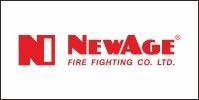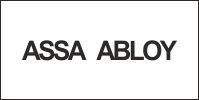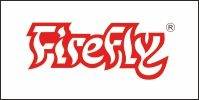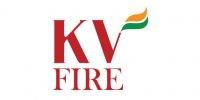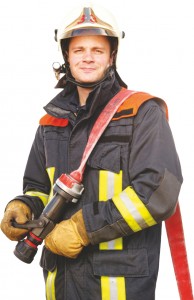 Cancer-causing particles are a threat on the fireground and in the fire station; here's how officers can protect firefighters The company officer should be a role model for their crew in many respects. One of the emerging roles for which officer must be more educated is the risk posed by inhalation hazards, both on the emergency scene and back at the fire station. "The connection between firefighting and cancer is real, and there is scientific data to support our position," said International Association of Fire Fighters General President Harold Schaitburger in a prepared statement for the Firefighter Cancer Support Group. "But we cannot stop there — we must continue to learn more so that we can prevent our members from contracting this horrible disease and help them if they do." For many years we've known of the inhalation hazard that exists on the fireground. Many fire departments have taken the appropriate measures to have SCBA available along with the supporting standard operating guidelines for its use. However, we still see too many instances of firefighters engaged in fire suppression operations who are not wearing their SCBA and breathing cylinder air — a key distinction as wearing SCBA does no good if it's not used. Partially burned, fully dangerous Today's fires are vastly different from those of the past. More synthetic materials provide the fuel, and when those fuels burn they produce hundreds of chemicals and compounds that chemists cannot completely understand. Those fires are most likely ventilation-limited — there's plenty of fuel, but oxygen is lacking oxygen — as opposed to a fuel-limited fire where most of the fuel has been consumed and there's still sufficient oxygen to sustain combustion. The bottom line is that such fires present firefighters with an increased risk from unburned hydrocarbons making the proper use of SCBA more critical. And the risk extends far beyond the actual operations necessary for fire suppression. Those unburned hydrocarbons and other products of combustion, like soot, remain present during the overhaul stage.
Cancer-causing particles are a threat on the fireground and in the fire station; here's how officers can protect firefighters The company officer should be a role model for their crew in many respects. One of the emerging roles for which officer must be more educated is the risk posed by inhalation hazards, both on the emergency scene and back at the fire station. "The connection between firefighting and cancer is real, and there is scientific data to support our position," said International Association of Fire Fighters General President Harold Schaitburger in a prepared statement for the Firefighter Cancer Support Group. "But we cannot stop there — we must continue to learn more so that we can prevent our members from contracting this horrible disease and help them if they do." For many years we've known of the inhalation hazard that exists on the fireground. Many fire departments have taken the appropriate measures to have SCBA available along with the supporting standard operating guidelines for its use. However, we still see too many instances of firefighters engaged in fire suppression operations who are not wearing their SCBA and breathing cylinder air — a key distinction as wearing SCBA does no good if it's not used. Partially burned, fully dangerous Today's fires are vastly different from those of the past. More synthetic materials provide the fuel, and when those fuels burn they produce hundreds of chemicals and compounds that chemists cannot completely understand. Those fires are most likely ventilation-limited — there's plenty of fuel, but oxygen is lacking oxygen — as opposed to a fuel-limited fire where most of the fuel has been consumed and there's still sufficient oxygen to sustain combustion. The bottom line is that such fires present firefighters with an increased risk from unburned hydrocarbons making the proper use of SCBA more critical. And the risk extends far beyond the actual operations necessary for fire suppression. Those unburned hydrocarbons and other products of combustion, like soot, remain present during the overhaul stage.
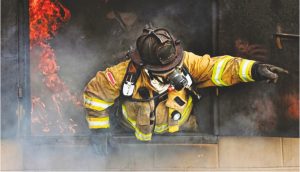 Firefighters who are not breathing SCBA cylinder air during overhaul are exposing their respiratory system to these chemicals and compounds, many of which have been identified as carcinogens. It bears repeating that company officers must consistently insist that their crews — and themselves so as to lead by example — breathe cylinder air from the beginning of fire suppression operations until the crew has completely exited the hazard area. Bringing it home The inhalation hazards do not end back at the fire station. Personal protective clothing that's been exposed to those fire-scene contaminants continues to off-gas once firefighters are back in quarters. That off-gassing is exacerbated when contaminated protective gear is kept in enclosed areas such as unventilated lockers, a gear bag or an automobile trunk. It's the company officers' responsibility to ensure that all protective gear is properly cleaned and dried according to the manufacturer's recommendations after every exposure to the products of combustion at a fire. Ensure that your personnel keep all protective gear out of the station's living quarters, particularly dormitory areas, at all times. Exposure to diesel emissions and diesel particulate matter poses another real inhalation risk for firefighters back at the fire station. Firefighters are at a high risk for this exposure because of the frequency with which they operate in close proximity to fire apparatus. Whether it's operating at the scene of an emergency, or conducting routine apparatus maintenance on the ramp in front of the station, firefighters are working in relatively close proximity to the apparatus and its engine exhaust. Protective measures To guard against this exposure, ensure that all apparatus tailpipes are connected to a diesel exhaust removal system or that the installed exhaust system is working properly. It is important that all doors between the bay area and living quarters are properly sealed against contaminants. Ensure that there are sensors or detectors for toxins in the living and sleeping quarters. If not, work with your department's leadership to obtain and install them — be an advocate for your personnel. One problem area is that too many firefighters and officers don't understand how the modern diesel emissions control equipment on their fire apparatus works, particularly the diesel particulate filter. Nor do they understand their role in keeping the system functioning at peak efficiency. To fix this, consult the manufacturer's recommen-dations for your apparatus for the proper care and maintenance of the diesel filter. Ensure that all your personnel are informed and educated on those care and maintenance procedures and that they consistently adhere to them. The exposures to potential cancer risks in the fire service are real and they don't exist solely on the emergency scene. The company officer plays a key role in limiting that threat to themselves and their crew by knowing what those risks are and how to minimize them. And the most effective way to do that is by demonstrating the proper behaviors every day. So how is your role-modeling going?
Firefighters who are not breathing SCBA cylinder air during overhaul are exposing their respiratory system to these chemicals and compounds, many of which have been identified as carcinogens. It bears repeating that company officers must consistently insist that their crews — and themselves so as to lead by example — breathe cylinder air from the beginning of fire suppression operations until the crew has completely exited the hazard area. Bringing it home The inhalation hazards do not end back at the fire station. Personal protective clothing that's been exposed to those fire-scene contaminants continues to off-gas once firefighters are back in quarters. That off-gassing is exacerbated when contaminated protective gear is kept in enclosed areas such as unventilated lockers, a gear bag or an automobile trunk. It's the company officers' responsibility to ensure that all protective gear is properly cleaned and dried according to the manufacturer's recommendations after every exposure to the products of combustion at a fire. Ensure that your personnel keep all protective gear out of the station's living quarters, particularly dormitory areas, at all times. Exposure to diesel emissions and diesel particulate matter poses another real inhalation risk for firefighters back at the fire station. Firefighters are at a high risk for this exposure because of the frequency with which they operate in close proximity to fire apparatus. Whether it's operating at the scene of an emergency, or conducting routine apparatus maintenance on the ramp in front of the station, firefighters are working in relatively close proximity to the apparatus and its engine exhaust. Protective measures To guard against this exposure, ensure that all apparatus tailpipes are connected to a diesel exhaust removal system or that the installed exhaust system is working properly. It is important that all doors between the bay area and living quarters are properly sealed against contaminants. Ensure that there are sensors or detectors for toxins in the living and sleeping quarters. If not, work with your department's leadership to obtain and install them — be an advocate for your personnel. One problem area is that too many firefighters and officers don't understand how the modern diesel emissions control equipment on their fire apparatus works, particularly the diesel particulate filter. Nor do they understand their role in keeping the system functioning at peak efficiency. To fix this, consult the manufacturer's recommen-dations for your apparatus for the proper care and maintenance of the diesel filter. Ensure that all your personnel are informed and educated on those care and maintenance procedures and that they consistently adhere to them. The exposures to potential cancer risks in the fire service are real and they don't exist solely on the emergency scene. The company officer plays a key role in limiting that threat to themselves and their crew by knowing what those risks are and how to minimize them. And the most effective way to do that is by demonstrating the proper behaviors every day. So how is your role-modeling going?














